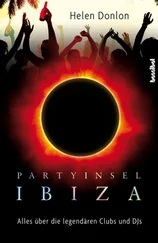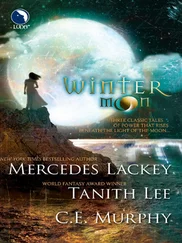Bubonic plague has swept the island twice. The first outbreak is thought to have occurred in 1348, and the second in 1652. This latter extended assault on the island’s health saw the port declared a contamination zone and marked as highly unsafe, which basically closed down maritime activity. The pall cast by this grimly dark and dispiriting epoch provoked a destructive famine which is alleged to have taken the lives of one in six of the islanders.
But the one gung-ho archetype to have been a consistent presence throughout the island’s history (and even unto this day) is that of the pirate, or corsair. The Catalans even sportingly authorised local corsair activity, as they could see it was a great way to make money and, to a certain extent, this ‘if you can’t beat ‘em, join ‘em’ approach was even a reasonable response to the permanent inevitability of piracy in the Western Mediterranean.
‘Privateer’ was the preferred nomenclature in this era of pro-active island defence. Even in 1356, one Pere Bernat, a notorious Ibicenco corsair had been issued the state’s full authority to defend the island from marauding Moorish ships. State-sanctioned Ibicenco privateers were furthermore eventually entitled to an excellent 80% of all booty captured, while the crown was only asking for their 20% commission. By the 17th century, the Ibicenco corsairs had become widely notorious and feared in the western Mediterranean, not just claiming vast quantities of stolen goods, but also gaining a heroic reputation for recapturing slaves that had been taken by the Moors. In 1806 Ibicenco privateer Antoni Riquer Arabí captured the Felicity, an English sailboat which was helmed by the infamous, bloodthirsty privateer Michele Novelli, alias ‘The Pope’. Arabí’s boat El Vives, and his fearless retinue are still celebrated in local lore.
The capital, Ibiza Town had at one point in the 16th century been wasted by Turkish marauders, and conical watchtowers were later built along the coast and inland. Many of these still survive today. The Castilians came to claim the island in 1715, and quickly renamed it from Eivissa to Ibiza, imposing Castilian Spanish as the official language, and renaming the various island districts to Castilian versions of their names. They also started to set up local town halls, flogged off the salt pans, built more churches and installed the island’s first Catholic bishop. On the whole, historians tend to agree that the island would now enter a long and maudlin period of cultural depression.
Ibiza only began to recover its colour towards the end of the 19th century, when the first settling travellers were to arrive by way of the new ferry services to and from the mainland. The initial bohemian travellers of the early 1930s, including characters such as the artist and Dadaist photographer Raoul Hausmann, were joined by other artists and writers escaping the spread of dark political clouds such as the nascent fascism movement that were spreading across Europe. These escapees represented in many ways Ibiza’s first proto-hippies.
Not that this would lead to mass tourism just yet, since by 1936 the bloody Spanish Civil War had broken out and the lives of Ibicenco families would be affected in ways which are still too painful for most locals to talk about today. A nightmare bloodbath ensued as the island saw itself align with forces on two opposing sides – Nationalist and Republican. Island cafés were marked as designated hotspots and news centres for one group or the other. Massive bloody barbarities were executed by both sides. The most brutal single act of horror was carried out by the Catalan Anarchists, who had briefly gained island control after hoisting the Francoist Nationalist forces. The Anarchists murdered more than 100 Nationalist inmates who were locked inside a holding enclosure in the castle in Dalt Vila. When the Nationalists hit back, they scoured the countryside for Republicans and tortured, executed or imprisoned them (many subsequently died from starvation) in a specially constructed concentration camp at La Savina in Formentera. The smoke from the Civil War fires still leaves a subliminal trail around the island, and for several families many hatchets remain unburied to this day.
Christian holy days eventually replaced the traditional pagan festivals that had long been in place. The annual summer solstice Nit de Sant Joan in the north of the island is a great example of an old pagan festival that is now being held in the name of a Christian saint, while keeping the old customs and rites alive. The festival is open to people of all ages, and until recently still included a late night trance party which took place right outside the town hall in the centre of the village of Sant Joan. The highlight of the whole event though is jumping over the bonfires which are lit at midnight in a field close to the village. Locals leap over each of the fires in quick succession, avoiding the flames and supposedly burning off negative feelings and making wishes as the jumps are made. Another similar solstice tradition is to write down your hopes and dreams on small pieces of paper before ripping them up and burning them, one by one.
Much is made of courting rituals, traditional and modern, in Ibiza. Often described as an island that is good for flings but unsophisticated in the ways of love, clubland’s generally short-term flirtations come from a long tradition that cherishes outlandish coquetry above subtle and steady entreaties. Gifted British linguist and translator John Ernest Crawford Flitch grasped this when he witnessed some heated scenes in the church of Santa Eulària, and he reported in his 1911 book, Mediterranean Moods, how “The fire was no mere feu de joie but a deadly encounter; not a smile that was merely flippant or trivial or coquettish, but regards that were grave, as all ardour is grave. Then I knew that Mass may have other uses than that of devotion. One breathed something more intoxicating than the smoke of incense. The air was also heavy with the smoke of passion…life burning at the fever-point. Certainly the chief business of Santa Eulalia is loving.” Later, after observing youths dancing and making music on their pipes at the sea’s edge he observed that, “courtship in Ibiza is a delicate and dangerous negotiation. The girl is not hasty to attach herself to a single lover. Why should she be when she has the hearts of half a dozen suitors and more to play with? But the game is full of dangers and it requires a firm and adroit hand to play it without disaster.”
German philosopher (and translator of Proust and Baudelaire) Walter Benjamin spent many happy times in Ibiza in the early 1930s. He and his friend Jean Selz, who claimed to be the “only Frenchman on the entire island”, were just two of the visitors who came to Ibiza and reported in their writings what life was really like back then. This era in the island’s history is often nostalgically evoked by older residents, as it represented an era of beautifully unpretentious and calm bucolic living in a tiny and still untrumpeted community. The few visitors that were on the island all seemed to recall spending their days swimming, hill walking, meditating and reading in blissful solitude, and all against a backdrop of great natural beauty.
Benjamin lived in an old house in Sant Antoni but would frequent the Migjorn bar which, like the Hotel Montesol (originally the Gran Hotel) on the town’s central avenue, Vara de Rey, first opened its doors in 1933 and soon became a social hub for the few foreigners in the community. As is so often the case, the freedom of spirit afforded by the unspoilt and calm natural beauty of the island’s daily life would translate even back then into scenes of dissolution on the Mediterranean bar terraces. One night Benjamin, who was usually a picture of temperance (although he had famously smoked hashish in 1927 in Berlin), proceeded to get catastrophically drunk after knocking back some 148% proof gin in the Migjorn bar, whereupon he collapsed on the sidewalk, before insisting on walking the 15 kilometres back home to Sant Antoni. Benjamin and Selz also sat smoking opium one night above the port in Dalt Vila. A brilliant critic and noted philosopher, Walter Benjamin took his own life at Port Bou in 1940, rather than be held captive by Nazis.
Читать дальше











